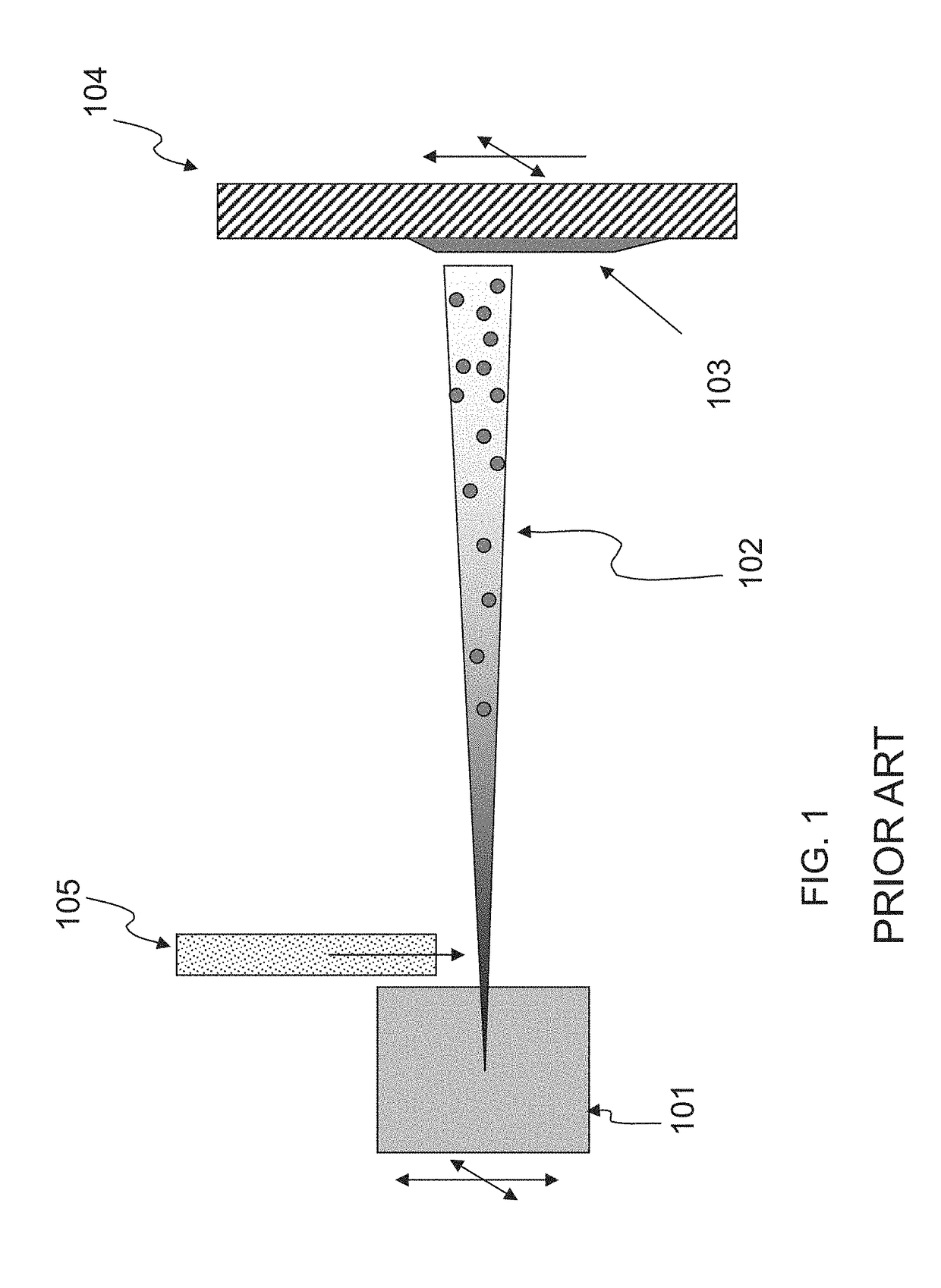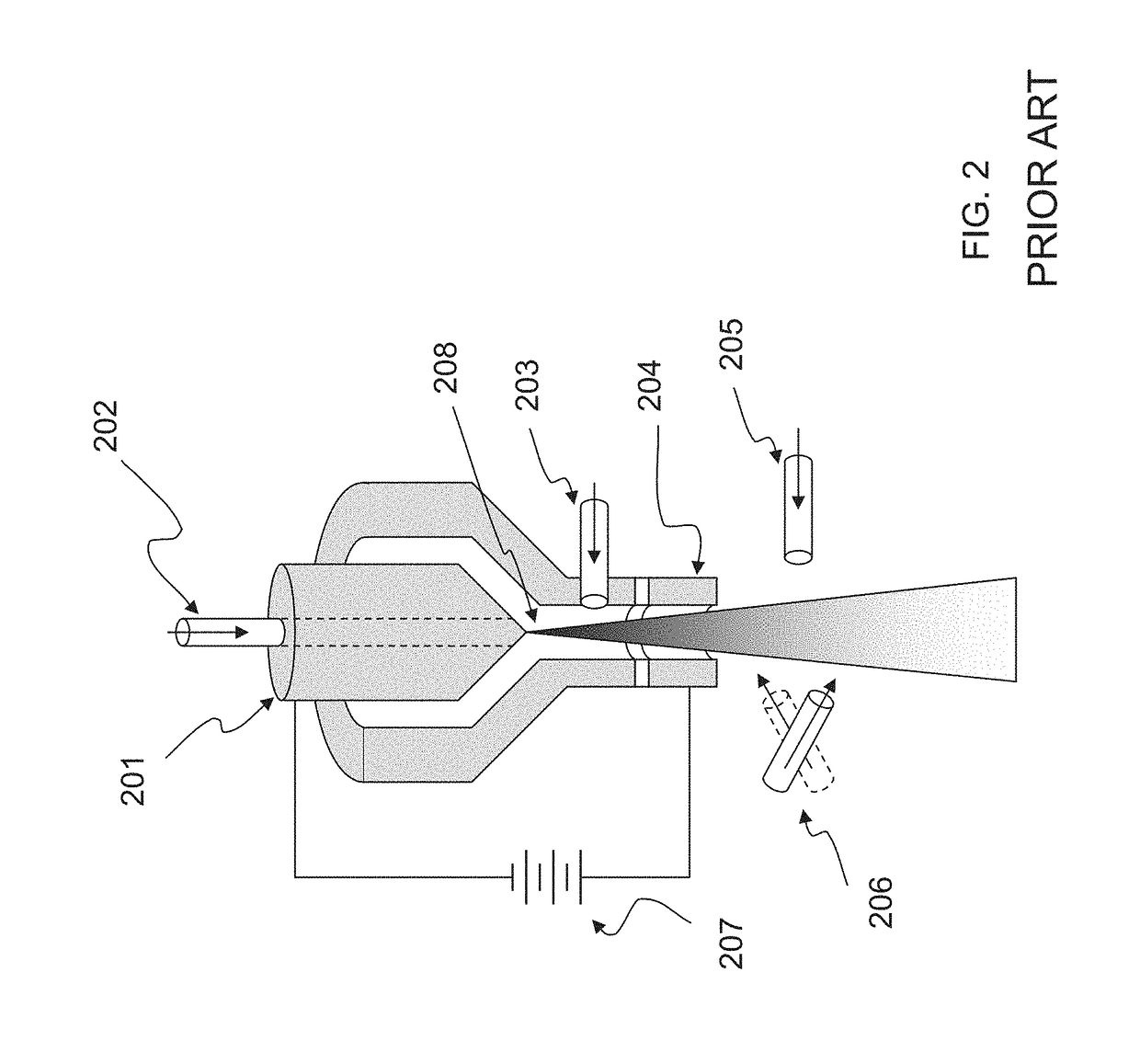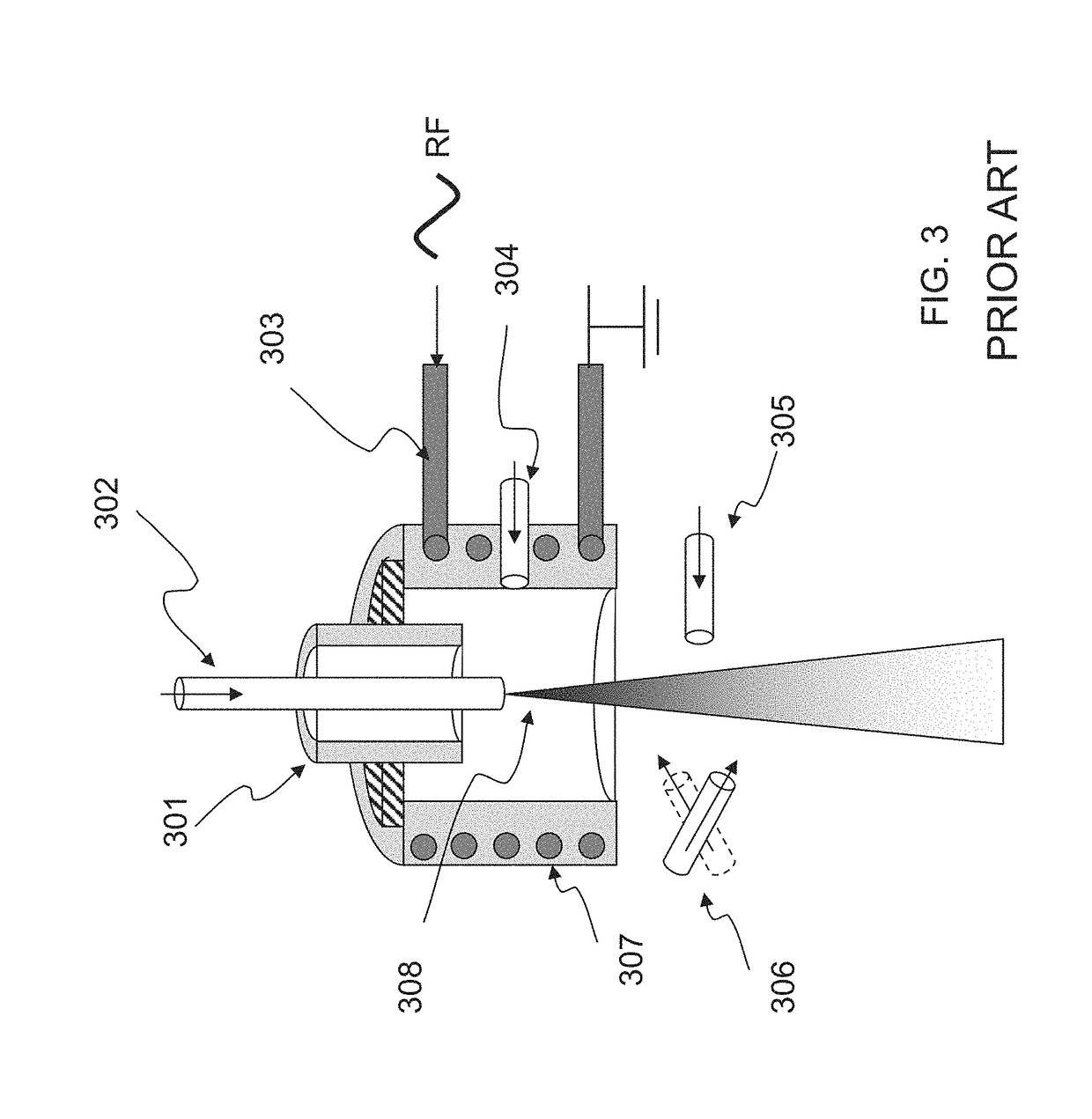Methods and systems for plasma deposition and treatment
a plasma and treatment technology, applied in the field of methods and systems for plasma deposition and treatment, can solve the problems of the deployment of manufacturing equipment, the effect of vacuum or reduced pressure environment, and the cost of performing such a deposition
- Summary
- Abstract
- Description
- Claims
- Application Information
AI Technical Summary
Benefits of technology
Problems solved by technology
Method used
Image
Examples
Embodiment Construction
[0084]FIG. 1 is a simplified diagram of components of a Thermal Spray Plasma (TSP) system as is commonly known in the art. A plasma source 101 generates a high temperature plasma environment, typically with temperatures ranging from 5,000 to 12,000° C. The temperature of the plasma is determined by a number of operating parameters, such as the power supplied to the plasma source, the powder or solid material feed rates that are supplied to the source region, the amount of gas that is introduced, the environmental pressure, etc. The introduction of gasses into the plasma chamber results in a plasma jet 102 being emitted from the plasma source. An injector 105 can inject additional materials into the plasma chamber 101 or into a convenient location in the plasma jet 102 that is emitted from the chamber. The materials that are injected into the plasma stream can be in almost any form, whether they are gaseous, liquid, solids, powders and combinations thereof. Common materials that are ...
PUM
 Login to View More
Login to View More Abstract
Description
Claims
Application Information
 Login to View More
Login to View More - R&D
- Intellectual Property
- Life Sciences
- Materials
- Tech Scout
- Unparalleled Data Quality
- Higher Quality Content
- 60% Fewer Hallucinations
Browse by: Latest US Patents, China's latest patents, Technical Efficacy Thesaurus, Application Domain, Technology Topic, Popular Technical Reports.
© 2025 PatSnap. All rights reserved.Legal|Privacy policy|Modern Slavery Act Transparency Statement|Sitemap|About US| Contact US: help@patsnap.com



